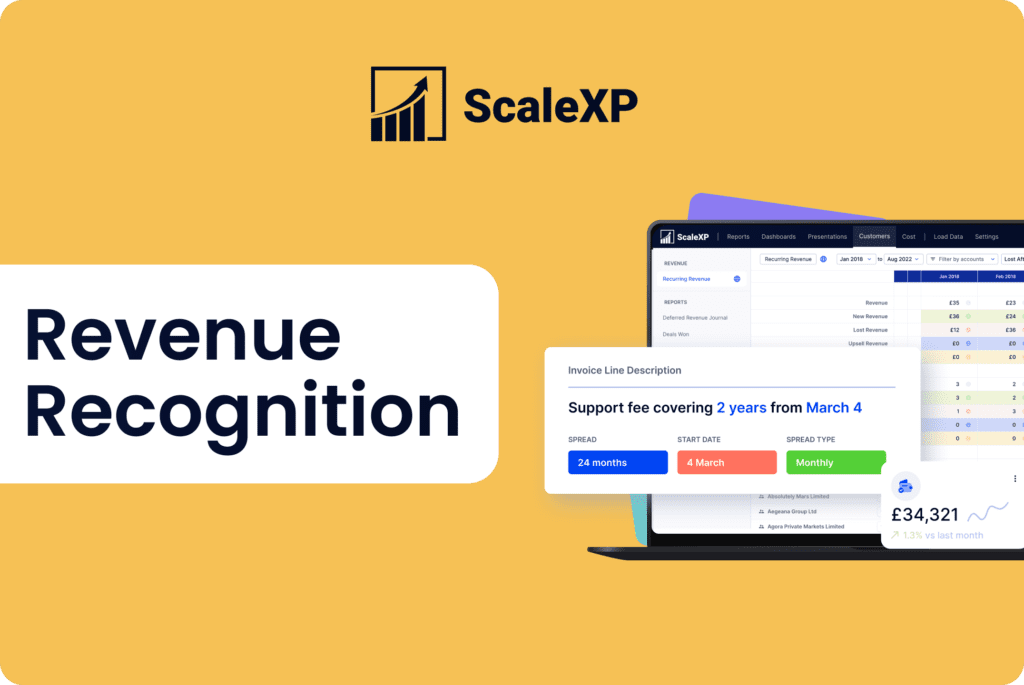Recording deferred revenue means acknowledging a payment received for goods or services not yet delivered. You’ll debit your asset account (since you’ve received cash) and credit your liability account (reflecting your obligation to fulfil the order). As you deliver the goods or services, you’ll gradually debit the deferred revenue account and credit your income statement, recognising the earned revenue.
Recording Deferred Revenue: A Step-by-Step Guide
Deferred revenue is an important concept in accounting, particularly for businesses that receive payments in advance of delivering a service or product. Understanding and accurately recording deferred revenue is essential for maintaining the integrity of financial statements and ensuring compliance with accounting standards.
Below, we’ll explore how to record deferred revenue and the benefits of doing so, for your business.
Understanding Deferred Revenue
What is Deferred Revenue?
Deferred revenue, otherwise known as unearned revenue, deferred income, or unearned income, is where a customer pays in advance for goods or services that are yet to be delivered or performed. This represents a liability for the company because it owes a service or product to the customer. This liability is only transformed into earned revenue once the company fulfils its obligations to deliver the goods or services.
In accounting terms, deferred revenue is crucial because it accurately depicts a company’s financial obligations and earnings over a specific period. Recognising revenue too early can mislead stakeholders about the company’s financial health, making deferred revenue a key element in accrual accounting.
Example of Deferred Revenue:
Let’s consider a scenario involving a subscription service. Imagine you run a business offering a 12-month subscription for a total cost of £1,200. A customer decides to subscribe and pays the entire amount upfront. In this case, the full £1,200 is initially recorded as deferred revenue. As you deliver the service monthly, a portion of this amount – specifically, £100 per month – gets recognised as earned revenue. This gradual recognition ensures that your financial statements accurately reflect the earnings and obligations for each accounting period.
How to Record Deferred Revenue on the Balance Sheet
Here, we’ll focus on the accounting mechanics of recording deferred revenue – that is, how deferred revenue is entered into the books and the subsequent adjustments made as the revenue is earned.
Deferred Revenue as a Liability
Deferred revenue is a liability for the business because it represents a future obligation to provide goods or services. Even though receiving prepayment may feel like an asset, it’s crucial to remember that it’s money you owe in services or products. Thus, it’s recorded on the balance sheet as a liability.
Journal Entry for Deferred Revenue
When a customer makes an advance payment, it results in two simultaneous accounting entries:
Increase in Cash (Asset):
The cash or bank account of the business increases. This is recorded as a debit entry becaue in accounting, increases in assets are debited.
Increase in Deferred Revenue (Liability):
Simultaneously, deferred revenue – a liability account – increases. This is recorded as a credit entry, as increases in liabilities are credited in accounting.
Example Journal Entry:
Let’s say a customer pays $1,200 for a yearly service in advance. The journal entry at the time of receiving the payment would be:
Date | Account | Debit | Credit |
1/11 | Cash | 1,200.00 | |
Deferred Revenue | 1,200.00 |
Adjusting Entries as Revenue is Earned
As the service is provided over time, a portion of the deferred revenue is recognized as earned revenue. This requires monthly adjusting entries:
Decrease in Deferred Revenue
Each month, as the service is provided, the liability decreases. This decrease is recorded as a debit to the deferred revenue account.
Increase in Earned Revenue
Concurrently, the revenue account increases, reflecting the earning of the service. This increase is recorded as a credit to the revenue account.
Monthly Adjusting Journal Entry Example:
Using our earlier example, $100 of the $1,200 would be earned each month. The monthly adjusting entry would be:
Date | Account | Debit | Credit |
2/11 | Deferred Revenue | 100.00 | |
Revenue | 100.00 |
Through these entries, the deferred revenue balance decreases over time, accurately reflecting the company’s liability and revenue generation.
Calculating Deferred Revenue
The calculation of deferred revenue is a straightforward process that follows the basic principle of accounting for liabilities:
Initial Recognition:
When you receive an advance payment, the entire amount is added to the deferred revenue account. This increase reflects your obligation to provide goods or services in the future.
Monthly Recognition as Revenue:
As you deliver the goods or services, you will recognize a portion of this deferred revenue as earned income each month. This monthly amount is calculated based on the total service or product value divided by the duration of the service period.
For example, with a $1,200 payment for a yearly service, $100 is recognized as revenue each month.
Tracking Changes:
It’s crucial to track these changes meticulously. Each month, as you recognize revenue, the deferred revenue balance should decrease correspondingly, ensuring that your balance sheet accurately reflects the current liability and revenue earned.
The Role of Accounting Software in Managing Deferred Revenue
While the process of recording deferred revenue is systematic, it can become complex, especially for businesses with a large number of advance payments or subscriptions. This is where accounting software becomes invaluable.
Benefits of Using Accounting Software:
Automated Tracking: Modern accounting software can automate the tracking of deferred revenue, reducing the risk of human error.
Timely Adjustments: Software can schedule and make the necessary adjusting entries each month, ensuring that revenue is recognized accurately and on time.
Reporting and Analysis: With built-in reporting tools, you can easily analyze revenue patterns and understand the financial health of your business. Moreover, many tools provide the ability to analyse revenue and customer information in different ways with minimal manual intervention and effort.
Audit Trail: Good software provides an audit trail, which is essential for transparency and compliance, especially during financial audits.
Conclusion
Accurate recording and management of deferred revenue are fundamental for any business that receives advance payments. By understanding the principles above and leveraging the power of accounting software, you can ensure your financial statements accurately reflect your financial status. That way, you can make informed decisions and maintain compliance with accounting standards.
Remember, while this guide provides a solid foundation on the fundamentals, it’s advisable to consult with a financial expert or accountant for tailored advice and to choose accounting software that best fits your business needs.






